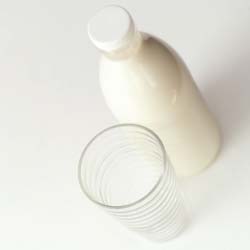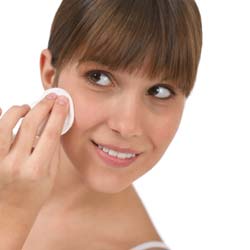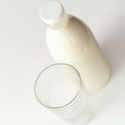Let me set this straight: I love milk. I’ve been drinking it since I was a kid and ice cream just would not be the same without it. But as a dermatologist, I’ve come to recognize that the white nectar is problematic for the skin. The links between diet and acne have been controversial and mired in anecdotal stories for the last century. When I went through my formal training the dogma was “Food does not cause acne.” However there is a growing body of evidence that what you put in your mouth may show up on your skin; and wholesome milk is at the center of that controversy.

Evidence that Milk Causes Acne
In 2008, researchers looked at almost 2,500 young men in a well-designed study to assess this issue. The group of men who drank the most milk tended to have the worst acne. This finding supports the results of a previous study in teenage girls in which diets rich in dairy products were found to be the culprit. Interestingly, it seems that skim milk was a worse offender than whole milk. Sherbet, cottage cheese, and chocolate milk also negatively affected the acne counts. The studies also failed to link fatty foods with breakouts. So while chocolate, pizza, soda, and fast food are not completely off the hook in my opinion, they do not seem to have the acne-generating potential of milk.
So Why Milk?
I need to specify that it was only cow’s milk studied. Rice, soy, and goat milk still have no data to support any links with breakouts. The prevailing theory is that people are absorbing the hormones given by dairy farmers to the cattle to stimulate milk production. Cow’s milk is rich in a hormone called insulin growth factor-1 (IGF-1). During adolescence, when acne is at its worst, the human body churns out a massive amount of IGF-1. It is believed that the IGF-1, testosterone, and another hormone called DHT (all found in milk) trigger acne breakouts through a complicated chain reaction. DHT is known to stimulate the oil glands, called sebaceous glands, to create a thicker, oilier substance that is more prone to block pores. The acne associated with testosterone is well-recognized from its use in body builders and athletes also. Two previous studies showed high milk consumption was linked to high IGF-1 levels; and again skim milk was worse than whole milk. The method of processing skim milk may account for this as whey proteins are added to impart a creamier texture. Some researchers speculate that these added proteins account for the effect. However no one really knows at this point.

So Should You Reduce Milk Consumption to Protect Against Acne?
Many dermatologists are still wary of the milk-acne link. They point out the studies only draw a correlation and not a provable causal relationship. The Dairy Council also refutes the studies. I’m sure we all know people who guzzle milk and have beautiful complexions and vice versa.
At this point, I feel it is safe to conclude that excessive intake of milk in acne prone teenagers may worsen pre existing acne. In reality, there will never likely be a double-blinded, randomized, placebo-controlled study addressing this. I’ve been recommending this to patients over the past two years with mixed results. Eliminating milk alone has yet to cure a single acne patient of mine; it has been helpful with tougher patients already on numerous medications. Ultimately, I never really know how compliant teenagers are with either prescribed medicines or diets. I am left to take them at their word. Who hasn’t snuck a bowl of ice cream in while on a diet?
Do you or someone you know need treatment for acne? Click here to request an appointment to learn about the many current treatment options available.

